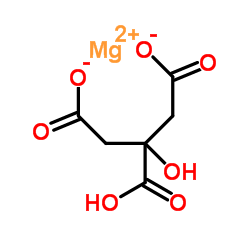Prevalence and impact of late defecation in the critically ill, thermally injured adult patient.
Scott T Trexler, Jonathan B Lundy, Kevin K Chung, Stephanie L Nitzschke, Christopher J Burns, Beth A Shields, Leopoldo C Cancio
文献索引:J. Burn Care Res. 35(4) , e224-9, (2014)
全文:HTML全文
摘要
The aim of this study was to determine the prevalence of late defecation (absence of laxation for more than 6 days after admission) as an indicator of lower-gastrointestinal (GI) tract dysfunction in burn patients. In addition, the authors wanted to determine whether the addition of polyethylene glycol 3350 to the standard bowel regimen led to improvement in markers of lower-GI function and outcomes. The authors conducted a retrospective chart review of patients admitted to the burn intensive care unit during a 26-month period. Inclusion criteria were 20% or more TBSA burn, requirement for mechanical ventilation, and age over 18 years. Of 83 patients included, the prevalence of late defecation was 36.1% (n = 30). There was no association between late defecation and mortality. Patients with late defecation had more frequent episodes of constipation after first defecation (P =.03), of feeding intolerance (P =.007), and received total parenteral nutrition more frequently (P =.005). The addition of polyethylene glycol to the standard bowel regimen did not affect markers of lower-GI function. Late defecation occurs in more than one third of critically ill burn patients. Late defecation was associated with ongoing lower-GI dysfunction, feeding intolerance, and the use of total parenteral nutrition. The causal relationship between these problems has not been determined. A prospective study at the authors' institution is currently planned to attempt to validate late defecation as a marker of lower-GI tract dysfunction, determine its relationship to various outcomes, and determine risk factors for its development.
相关化合物
| 结构式 | 名称/CAS号 | 分子式 | 全部文献 |
|---|---|---|---|
 |
柠檬酸镁
CAS:144-23-0 |
C6H6MgO7 |
|
Solid state compatibility study and characterization of a no...
2015-06-10 [J. Pharm. Biomed. Anal. 110 , 67-75, (2015)] |
|
A green heterogeneous synthesis of N-doped carbon dots and t...
2014-09-07 [Nanoscale 6(17) , 10307-15, (2014)] |
|
Computed tomography colonography technique: the role of intr...
2013-01-01 [Radiol Res Pract 2013 , 517246, (2014)] |
|
A simple image processing approach for electronic cleansing ...
2009-07-01 [Biomed Imaging Interv J 5 , e28, (2011)] |
|
Effects of electrosurgery and vaginal closure technique on p...
2013-01-01 [JSLS 17 , 414-7, (2013)] |